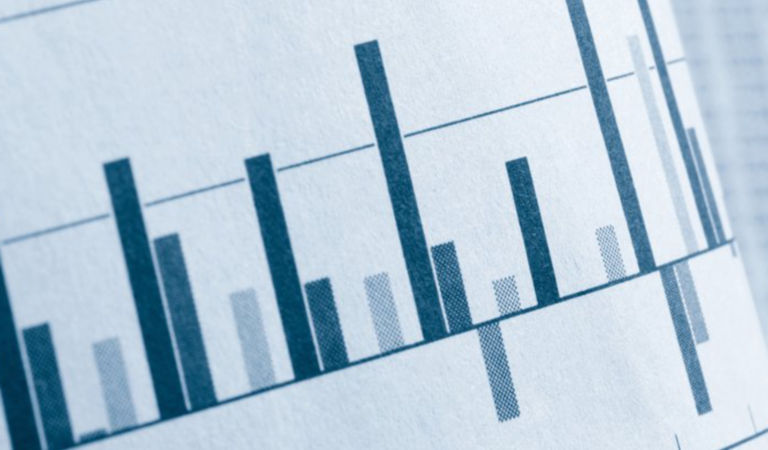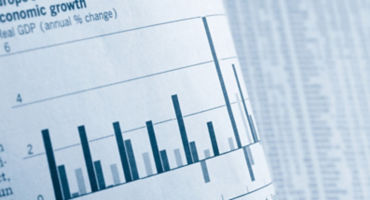Equities
Global equities (+5.5%) rebounded in June, ending the month with a 14.4% gain year to date. Global economies and labor markets remained resilient despite the headwinds from elevated inflation, tightening credit conditions, and the rapid rise in interest rates. Declining energy prices helped reduce headline inflation in most countries, easing the strains on households and businesses. However, persistently high core consumer prices maintained the pressure on central banks to keep interest rates higher for longer. The leaders of the US Federal Reserve (Fed), the European Central Bank (ECB), and the Bank of England (BOE) reaffirmed that further policy tightening is needed to bring down inflation, indicating that lower inflation can be achieved without triggering recession. China’s economy continued to lose steam as factory activity declined for the third straight month, heightening calls for greater stimulus measures. Japan continued to surge, with the Bank of Japan (BOJ) maintaining its ultra-loose monetary policy and leaving its yield cap unchanged. In an attempt to boost oil prices, Saudi Arabia plans to cut oil output by one million barrels a day in July following a recent announcement of a broader OPEC+ deal to limit supply into 2024.
US
US equities (+6.6%) rose for the fourth consecutive month, as waning inflation, surprisingly strong macroeconomic data, and improving earnings prospects provided hope that the US economy could experience a moderate slowdown rather than a full-blown recession. President Joe Biden signed into law a bill to suspend the nation’s debt limit, removing a key financial risk. Markets were encouraged by moderating inflation; the headline Consumer Price Index rose 4.0% year over year in May, down from a 4.9% increase in April and well below the 9.1% gain in June 2022. However, core consumer prices declined at a much slower pace as the core Personal Consumption Expenditures Price Index — the Fed’s preferred inflation gauge — ebbed only slightly to 4.6%, suggesting that underlying price pressures remained firm. The Fed left interest rates unchanged for the first time in 15 months to assess the lagged impact of tighter policy on economic activity and inflation. However, most Fed policymakers anticipate two more rate hikes this year on concerns that economic growth and inflation haven’t slowed as much as predicted. Data released in June revealed unexpected vigor in the economy, highlighted by a robust labor market, resilient consumer spending, and renewed strength in the housing market. Furthermore, annualized US GDP in the first quarter was revised sharply higher to 2% — well above the previous estimate of 1.3% — driven by the largest annual increase in consumer spending since mid-2021.
Economic data released during the month showed that the economy maintained solid momentum despite the headwinds from higher interest rates and tighter credit. The labor market was exceedingly strong in May, even as demand for workers has gradually softened. Jobless claims remained low, and nonfarm payrolls exceeded expectations, rising by 339,000, after the results from the prior two months were revised higher by almost 100,000. The unemployment rate increased to 3.7% but remained historically low, while average hourly earnings grew at a stout 4.3% annual pace. The buoyant job market and healthy household finances helped support consumer spending. Retail sales surprisingly climbed 0.3% in May, although core personal consumption expenditures rose only 0.1% following a downwardly revised 0.4% gain in April, underscoring a gradual slowdown in spending, which many economists forecast will ease further in the coming months. Consumer credit in April rose by the most in five months, which, combined with dwindling excess savings, signaled that households are borrowing more to support their spending. The Conference Board’s Consumer Confidence Index surged to a 17-month high of 109.7 in June. Very favorable views of the economy’s current state contrasted with weak future expectations, with individuals signaling less willingness to make big outlays. Housing market data revealed that new-home sales, building permits, and housing starts surged in May amid extremely low housing inventory, while high mortgage rates and low housing stock impeded existing-home sales.
The manufacturing sector slumped to a level last seen at the outset of the pandemic. The Institute of Supply Management (ISM) Manufacturing Index dipped to 46.0 in June on declining employment and production, while a drop in imports and exports signaled a weaker global economic backdrop. Price pressures continued to deflate, providing some encouragement. The services sector expanded at a modest pace in May, as the ISM Services Index slipped 1.6 points, to 50.3. New orders and business activity slowed, causing input prices to fall to a three-year low. The Flash Composite Purchasing Managers’ Index (PMI) showed that robust demand kept services-sector activity healthy, while prices charged by companies grew at the slowest pace in five months. Small-business sentiment in May held near its lowest level in a decade amid pessimistic views on the outlook for sales, the economy, and credit conditions.
All 11 sectors in the S&P 500 Index (+6.6%) posted positive results. Consumer discretionary (+12.1%) was the best-performing sector, led higher by automobiles (+27.6%). Industrials (+6.2%) and materials (+11.1%) were other notable outperformers. Financials (+6.7%) rose, driven by financial services (+7.1%) and banks (+6.1%). Energy (+6.6%) rebounded from last month’s decline. Despite achieving positive returns, utilities (+1.6%) was the worst-performing sector, followed by communication services (+2.6%).
Europe
European equities (+2.5%) advanced. The eurozone economy showed renewed weakness as the Flash Eurozone Composite PMI indicated that business output growth came close to stalling in June. Eurozone first-quarter GDP was revised lower to a 0.1% decline, driven by volatile energy prices, tightening monetary policy, declining manufacturing orders, and increasing labor costs. A pronounced industrial slowdown in Germany also weighed on the region’s economic growth. To curb persistent price pressures, central banks in Europe continued to tighten monetary policy and signaled additional rate hikes in the coming months. The central banks of Norway and the UK opted for a sizable 50 basis points (bps) rate increase, while the central banks of Sweden and Switzerland and the ECB hiked by 25 bps. Preliminary estimates showed that eurozone headline inflation extended its recent declines, falling to 5.5% in June, from 6.1% in May. However, core inflation accelerated to 5.4%, from 5.3%, as input costs in the services sector continued to rise. At the ECB’s annual conference in Sintra, Portugal, ECB President Christine Lagarde reaffirmed an aggressive stance on fighting inflation and stated that a eurozone recession was not the bank’s baseline expectation. Russian President Vladimir Putin reasserted his leadership by thwarting a mutiny by the troops of former ally and Wagner Group boss Yevgeny Prigozhin.
The downturn in Europe’s manufacturing sector intensified as the HCOB Eurozone Manufacturing PMI slid to 43.4 in June, from 44.8 in May. The contraction in production volumes was the sharpest since October last year. Austria, Germany, Italy, Ireland, and the Netherlands registered their largest declines in business conditions for over three years, driven by marked weakness in new orders. Employment dropped for the first time since January 2021, but output prices fell significantly as supply chains improved — a positive sign for inflation. The Flash Eurozone Composite PMI in June showed that services-sector growth fell steeply after robust gains in the previous two months. Buoyed by wage pressures, input costs continued to rise, but the rate of increase moderated by the most since May 2021. The European Commission’s Economic Sentiment Indicator declined further in June, to 94.0, as higher consumer confidence was offset by a fifth consecutive drop in confidence among business managers.
In Germany (+2.9%), the manufacturing sector suffered another steep downturn, hit by volatile energy prices, falling new orders, and lackluster export growth. The ZEW Indicator of Economic Sentiment rose in June but remained in negative territory, with no expectations of improving economic growth in the second half of the year due to strained exports from a subdued global economy. The UK (+1.2%) avoided a recession in the first quarter, but the economic outlook remained weak amid the strains of high inflation. The S&P Global/CIPS Composite PMI in June dropped for the second straight month, suggesting that momentum in the economy could be waning. Core inflation accelerated to its highest level since 1992, rising 7.1% year over year in June and firming consensus views that interest rates will peak above 6% by the end of the year.
Pacific Basin
Pacific Basin equities (+5.9%) ended June higher, led by Japan (+7.7%), where stocks rallied to multi-decade highs. The BOJ kept its policy settings and its economic assessment and outlook unchanged, but a faster-than-anticipated rise in inflation fueled speculation that the bank will raise its inflation forecasts and potentially tweak its stimulus program in July. A measure of core inflation that excludes food and energy accelerated 4.3% year over year — the highest reading since 1981. The BOJ’s Deputy Governor Ryozo Himino stressed the need to maintain loose monetary policy but also noted that recent price increases were stronger than projected and inflation expectations were increasing, a clearer indication that central bank officials perceive wage and consumer demand factors as playing a greater role in inflation. Nevertheless, the ongoing decline in Japanese real wages in April highlighted that the recovery in real wage growth remained slow due to persistent gains in consumer prices. In the first quarter, Japan’s economy expanded at a significantly faster pace than initially estimated as businesses ramped up spending; GDP grew at an annualized rate of 2.7%, well above the previous estimate of 1.6%.
In Australia (+2.2%), persistent inflation led the Reserve Bank of Australia (RBA) to unexpectedly raise interest rates by 25 bps, to 4.1% —the highest level since April 2012 — in an effort to bring inflation back to target by mid-2025. Australia’s headline and core inflation subsequently slowed more than anticipated in May, rising 5.6% and 6.1%, respectively, from a year earlier. The marked slowdown in price gains contrasted with a robust labor market, surging labor costs, and a rebounding housing market, which added to the inflation impulse and created considerable uncertainty about the RBA’s future policy decisions. First-quarter GDP growth was revised lower to 0.2%, the weakest three-month expansion since September 2021. This disappointing result revealed that aggressive policy tightening weighed on household spending and construction, while accelerating labor costs underscored stubborn inflation pressures in the economy. In May, 75,900 jobs were added after a loss of 4,300 jobs in April, and the unemployment rate declined to 3.6%. Consumer sentiment ended the quarter near a record low as consumers cut back on spending in the face of rising interest rates and high inflation. Business confidence was also depressed.
In Hong Kong (+3.5%), the interbank lending rate rose to the highest level since 2007, which could stymie the city’s economic recovery. In lockstep with the Fed, the Hong Kong Monetary Authority held interest rates at 5.5%, marking the first pause in the hiking cycle since March 2022. In May, the unemployment rate was unchanged despite improving economic growth and labor shortages in some industries. Exports fell for a thirteenth consecutive month, with weak demand from China and the rest of the world continuing to strain the city’s economic outlook.
Singapore’s (+1.6%) export-dependent economy was hampered by slowing global growth, which caused exports in May to slump for the eighth consecutive month. In New Zealand (-0.3%), business confidence improved to its highest level since November 2021 as inflation indicators slowly eased, and business activity measures broadly lifted.
Emerging Markets
Emerging markets (EM) equities (+3.5%) rose, with all three EM regions posting positive returns. Latin America led the advance followed by Europe, the Middle East, and Africa (EMEA) and Asia.
Latin American equities (+6.9%) moved higher as easing inflationary pressures led to more accommodative policy decisions. In Brazil (+9.3%), the central bank held rates steady at 13.75% and signaled the possibility of a rate cut in August amid evidence of deflation and President Luiz Inácio Lula da Silva’s intense criticism of the country’s high interest rates. Brazil’s National Monetary Council introduced a 3% inflation target to be met by 2026, extending the time horizon for taming inflation, while Congress advanced the government’s new fiscal rules, seen as crucial to curbing public debt. Mexico (+2.1%) held interest rates at 11.25%, and Chile’s (+6.6%) central bank lowered its inflation and policy rate projections for the second half of 2023. In Peru (+11.1%), interest rates remained at 7.75% — a 22-year high. Annual inflation fell in June amid falling transportation and fuel prices but remained well above the central bank’s 1% – 3% target range.
In EMEA (+4.5%), equities advanced on the back of several key policy decisions. Hungary (+8.1%) and Poland (+9.1%) vetoed a European Union proposal on migration, favoring a more even distribution of migrants across countries. Saudi Arabia (+3.4%) moved higher as the energy minister announced a deeper cut to oil supplies in July. In a dramatic reversal of its unorthodox monetary policy, Turkey’s (+20.5%) central bank sharply increased interest rates to 15% to tame painfully high inflation. The decision came on the heels of President Recep Tayyip Erdoğan’s reelection and the appointment of a new central bank governor, Hafize Gaye Erkan.
Asia (+3.0%) ended higher. China’s (+4.5%) central bank modestly cut prime interest rates in an effort to stimulate a sputtering economy and boost consumption. However, a slew of disappointing economic data, including softening labor and property markets and lackluster retail sales and industrial production, underscored China’s weaker-than-expected economic recovery and increased calls for greater stimulus. In June, the official NBS Manufacturing PMI rose slightly to 49, matching the consensus forecast and providing some indication of stability in the sector. A meeting between US Secretary of State Antony Blinken and Chinese President Xi Jinping offered some hope that relations between the two countries would stabilize, but tensions remained high after Taiwan (+3.4%) announced a new trade agreement with the United States. India’s (+3.9%) central bank left interest rates unchanged at 6.5% for the second straight meeting.
Fixed Income
Most fixed income sectors outperformed duration-equivalent government bonds as credit spreads moved tighter and US recession fears abated. Sovereign yields generally ended higher, as persistent inflation kept central banks hawkish.
US economic readings were largely resilient. Robust consumer spending lifted GDP above expectations in the first quarter, and consumer confidence rose on improved assessments of the expectations and current conditions components. Industrial production eased more than anticipated, owing to a decline in mining and utilities. A drop in new orders weighed down the S&P Global Manufacturing PMI, while regional manufacturing surveys posted mixed results. Higher demand for transportation equipment boosted durable goods orders. Nonfarm payrolls rose on greater demand for workers in the health care and education sectors due to increased retirements. The unemployment rate reached a seven-month high, and weekly jobless claims rose but remained at levels consistent with a robust labor market. Existing- and new-home sales advanced despite ongoing housing market headwinds from tight supply, higher prices, and rising mortgage rates. Eurozone headline inflation eased amid lower energy and food prices, while the core reading remained stubbornly high. The HCOB Eurozone Manufacturing PMI declined as demand slowed, Germany’s factory orders fell on weaker foreign demand, and the HCOB Eurozone Services PMI also dropped below estimates. The UK’s industrial production slowed more than forecast, particularly manufacturing. China’s official NBS Manufacturing PMI declined amid reduced global demand and a slowdown in small business operations. Weaker foreign demand hampered Japan’s industrial production, particularly motor vehicle output. Canada’s unemployment rate ticked higher, with job losses concentrated in the business and professional services sectors. Australia’s building permits fell to an 11-year low.
Major central banks’ policy actions increasingly diverged. The ECB and Sweden’s Riksbank hiked rates by 25 bps. The BOE delivered a 50 bps increase following stickier inflation and wage growth. Norway’s Norges Bank lifted rates by 50 bps and signaled further increases this year. The Bank of Canada and the RBA raised rates by 25 bps, retaining guidance that further tightening “may be required.” The People’s Bank of China lowered its medium-term lending rate as the post-COVID recovery continued to lose momentum. The BOJ kept its ultra-loose monetary policy unchanged despite increasing inflation.
Most global sovereign bond yields increased. US yields rose, particularly at the front end of the yield curve, amid sticky core inflation and a resilient labor market. Despite a pause in its hiking cycle, the Fed signaled further rate increases may be necessary, and markets priced out rate cuts in 2023. European yields ended higher, driven by growing concerns about persistent inflation. UK gilts continued their significant sell-off amid stubbornly high inflation. In EM, Brazilian rates fell meaningfully as ongoing disinflation suggested that interest-rate cuts could come sooner than expected. South African bonds sold off substantially on deteriorating economic indicators, while the ongoing energy crisis threatened hopes of a swift economic recovery. The Bloomberg TIPS index delivered a total return of -0.34%, and the 10-year breakeven inflation rate increased by 6 bps, to 2.23%, during the month.
Global credit bonds outperformed duration-equivalent government bonds as credit spreads tightened. Within the securitized sectors, agency mortgage-backed securities, commercial mortgage-backed securities, and asset-backed securities outperformed duration-equivalent government bonds. Within EM, local markets debt (+3.26%) outperformed external debt (+2.23%), in US-dollar terms. Spread narrowing contributed positively to external debt results, while an increase in US Treasury yields had a negative impact. The appreciation of EM currencies drove positive performance within local markets, and movement in EM rates also benefited results.
Currencies
The US dollar weakened versus most major currencies, driven by softer-than-expected US consumer spending and inflation data. European and dollar-bloc currencies gained broadly versus the US dollar, prompted by central banks’ aggressive stance on rate hikes. The Japanese yen weakened further as the BOJ kept its ultra-loose monetary policy unchanged, while the Fed retained its hawkish tone at its latest meeting. EM currencies ended mixed. The Turkish lira plunged after the central bank’s large rate hike failed to assure markets that President Tayyip Erdoğan was abandoning his long-held unorthodox policies. Latin American currencies, led by the Colombian peso, rallied versus the US dollar amid an improving economic outlook and an attractive interest-rate differential.
Commodities
Commodities (+4.4%) rose in June after seven straight monthly declines, with all but one of the sectors ending in positive territory. Energy (+6.0%) rallied, snapping a seven-month slump in prices. US natural gas (+19.9%) surged, mostly predicated on a less pessimistic near-term view due to persistently strong gas usage for power generation. Hotter near-term weather forecasts also helped to support prices, although stockpiles that are approximately 16% ahead of their five-year seasonal average curtailed significant price spikes. Heating oil (+9.7%) and gas oil (+8.1%) gained on news of a short-lived threat of mutiny in Russia by the mercenary Wagner Group. Gasoline (+8.6%) was bolstered by expectations for a record number of US drivers during the Fourth of July holiday. Crude oil (+4.2%) ended higher amid reports of a strong draw for US domestic stockpiles and a slump in Russia’s seaborn crude oil flows to international markets, likely driven by maintenance work late in the month.
Industrial metals (+0.5%) ended the month higher, as the slower-than-expected demand recovery in China pressured the sector. Zinc (+7.0%), lead (+4.9%), and copper (+3.4%) advanced on firming views that China will roll out more fiscal policies to support its recovery. Chinese Premier Li Qiang indicated that growth picked up during the second quarter and more stimuli would be introduced, boosting the consumption outlook for the world’s biggest metals importer. Nickel (-0.1%) ended lower, while aluminum (-5.1%) fell on the back of a weak demand outlook.
Precious metals (-2.3%) finished lower, with silver (-2.9%) and gold (-2.2%) pulling back. Gold was weighed down by the prospect of more monetary tightening by the Fed and ECB after their meetings in mid-June, as higher interest rates are usually negative for non-interest-bearing bullion. Appreciation in the US dollar also dampened gold demand.
Agriculture & livestock (+4.0%) rose as soybeans (+18.6%) surged on a larger-than-expected deterioration in US growing conditions because of persistent dry weather. Lean hogs (+17.3%) were driven sharply higher by improving pork demand in response to a surge in beef prices to the third-highest level in history. Cocoa (+12.3%) rallied to a 46-year high as bad weather in West Africa threatened production prospects for the main suppliers of cocoa beans. Live cattle (+6.1%) and feeder cattle (+4.0%) advanced as falling corn prices, driven by rains in the Corn Belt, signaled cheaper feed costs. Wheat (+5.8%) benefited from concerns that continued instability in top wheat exporter Russia could disrupt supplies. Cotton (-0.3%) ended slightly lower amid reports that China plans to release cotton from state stockpiles to boost supplies, pressuring prices. Corn (-5.7%) fell on forecasts for rain in some of the main growing areas of the US, the top producer. Sugar (-7.4%) was dragged lower by an improved outlook for Brazil’s cane crop and weak demand in China, the world’s largest sugar importer. Coffee (-8.6%) declined as ongoing dry weather in Brazil accelerated the coffee harvest.













Japan equity: Reason to believe
Continue readingBy
Toshiki Izumi, CFA, CMA